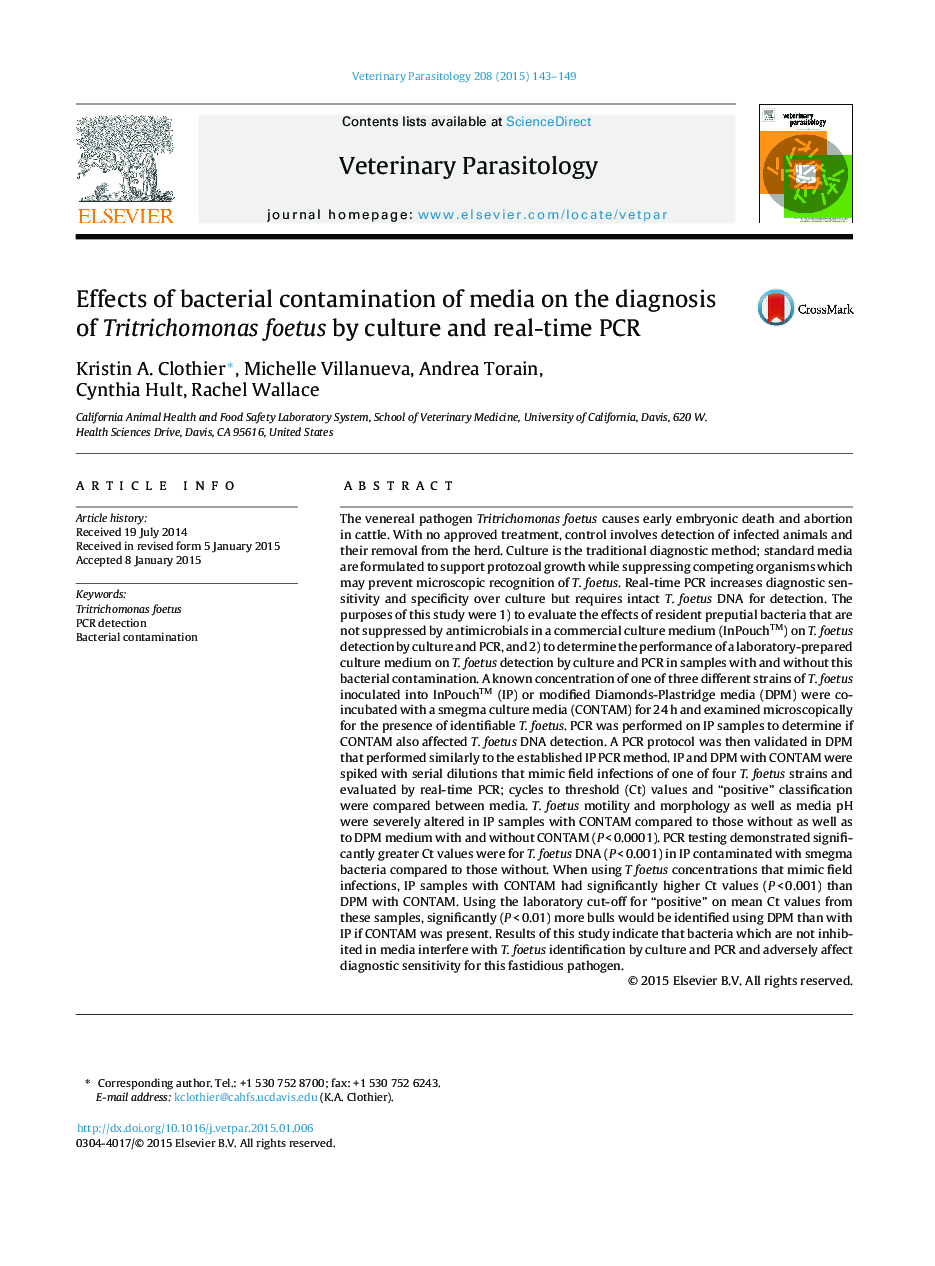| کد مقاله | کد نشریه | سال انتشار | مقاله انگلیسی | نسخه تمام متن |
|---|---|---|---|---|
| 5802515 | 1555674 | 2015 | 7 صفحه PDF | دانلود رایگان |

- Accurate diagnosis is critical for Tritrichomonas foetus control programs.
- Viable organisms with intact DNA are necessary to maximize detection.
- We evaluated bacterial contamination effects on viability and detection of T. foetus.
- Recognition of T. foetus by culture and PCR was inhibited by bacterial overgrowth.
- Certain media formulations are more resistant to effects of this contamination.
The venereal pathogen Tritrichomonas foetus causes early embryonic death and abortion in cattle. With no approved treatment, control involves detection of infected animals and their removal from the herd. Culture is the traditional diagnostic method; standard media are formulated to support protozoal growth while suppressing competing organisms which may prevent microscopic recognition of T. foetus. Real-time PCR increases diagnostic sensitivity and specificity over culture but requires intact T. foetus DNA for detection. The purposes of this study were 1) to evaluate the effects of resident preputial bacteria that are not suppressed by antimicrobials in a commercial culture medium (InPouchâ¢) on T. foetus detection by culture and PCR, and 2) to determine the performance of a laboratory-prepared culture medium on T. foetus detection by culture and PCR in samples with and without this bacterial contamination. A known concentration of one of three different strains of T. foetus inoculated into InPouch⢠(IP) or modified Diamonds-Plastridge media (DPM) were co-incubated with a smegma culture media (CONTAM) for 24 h and examined microscopically for the presence of identifiable T. foetus. PCR was performed on IP samples to determine if CONTAM also affected T. foetus DNA detection. A PCR protocol was then validated in DPM that performed similarly to the established IP PCR method. IP and DPM with CONTAM were spiked with serial dilutions that mimic field infections of one of four T. foetus strains and evaluated by real-time PCR; cycles to threshold (Ct) values and “positive” classification were compared between media. T. foetus motility and morphology as well as media pH were severely altered in IP samples with CONTAM compared to those without as well as to DPM medium with and without CONTAM (P < 0.0001). PCR testing demonstrated significantly greater Ct values were for T. foetus DNA (P < 0.001) in IP contaminated with smegma bacteria compared to those without. When using T foetus concentrations that mimic field infections, IP samples with CONTAM had significantly higher Ct values (P < 0.001) than DPM with CONTAM. Using the laboratory cut-off for “positive” on mean Ct values from these samples, significantly (P < 0.01) more bulls would be identified using DPM than with IP if CONTAM was present. Results of this study indicate that bacteria which are not inhibited in media interfere with T. foetus identification by culture and PCR and adversely affect diagnostic sensitivity for this fastidious pathogen.
Journal: Veterinary Parasitology - Volume 208, Issues 3â4, 15 March 2015, Pages 143-149